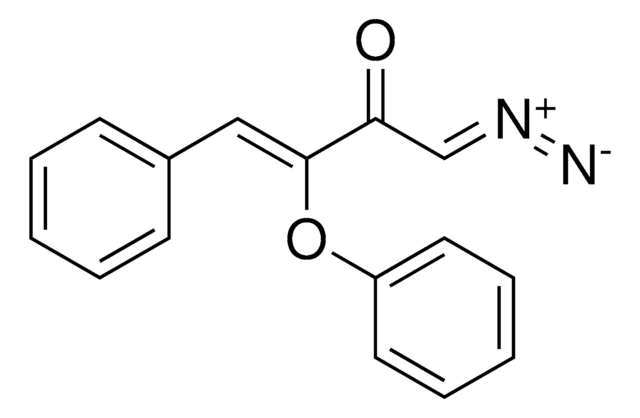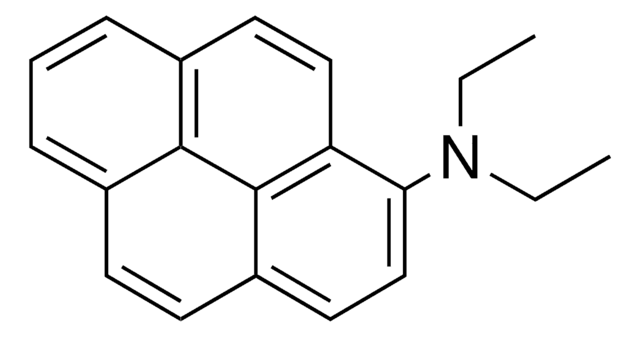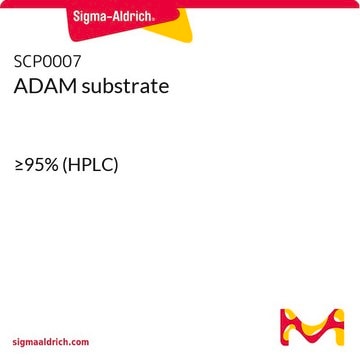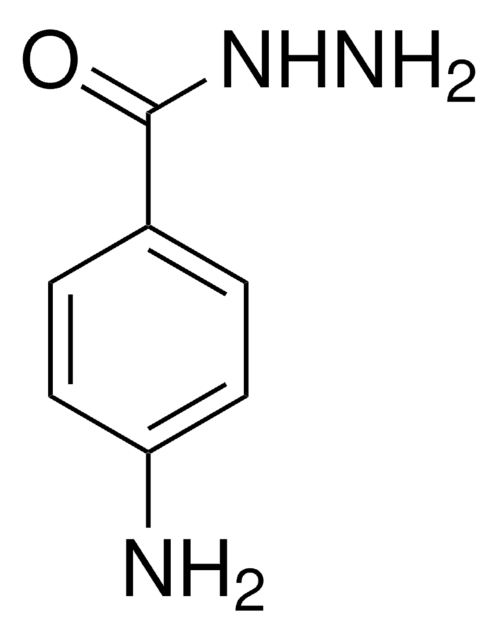P6863
PDAM
≥70% purity (HPLC), for HPLC derivatization, solid
Sinonimo/i:
1-Pyrenyldiazomethane, Pyrene, 1-(diazomethyl)
About This Item
Prodotti consigliati
product name
PDAM, for HPLC derivatization
Grado
for HPLC derivatization
Livello qualitativo
Saggio
≥70% (HPLC)
Forma fisica
solid
λmax
338-344 nm
Fluorescenza
λem 371-379 nm
applicazioni
diagnostic assay manufacturing
hematology
histology
Condizioni di spedizione
dry ice
Temperatura di conservazione
−20°C
Stringa SMILE
[N-]=[N+]=Cc1ccc2ccc3cccc4ccc1c2c34
InChI
1S/C17H10N2/c18-19-10-14-7-6-13-5-4-11-2-1-3-12-8-9-15(14)17(13)16(11)12/h1-10H
PEIBAWRLFPGPAT-UHFFFAOYSA-N
Applicazioni
Codice della classe di stoccaggio
11 - Combustible Solids
Classe di pericolosità dell'acqua (WGK)
WGK 3
Punto d’infiammabilità (°F)
Not applicable
Punto d’infiammabilità (°C)
Not applicable
Dispositivi di protezione individuale
Eyeshields, Gloves, type N95 (US)
Choose from one of the most recent versions:
Certificati d'analisi (COA)
Don't see the Right Version?
If you require a particular version, you can look up a specific certificate by the Lot or Batch number.
Possiedi già questo prodotto?
I documenti relativi ai prodotti acquistati recentemente sono disponibili nell’Archivio dei documenti.
Il team dei nostri ricercatori vanta grande esperienza in tutte le aree della ricerca quali Life Science, scienza dei materiali, sintesi chimica, cromatografia, discipline analitiche, ecc..
Contatta l'Assistenza Tecnica.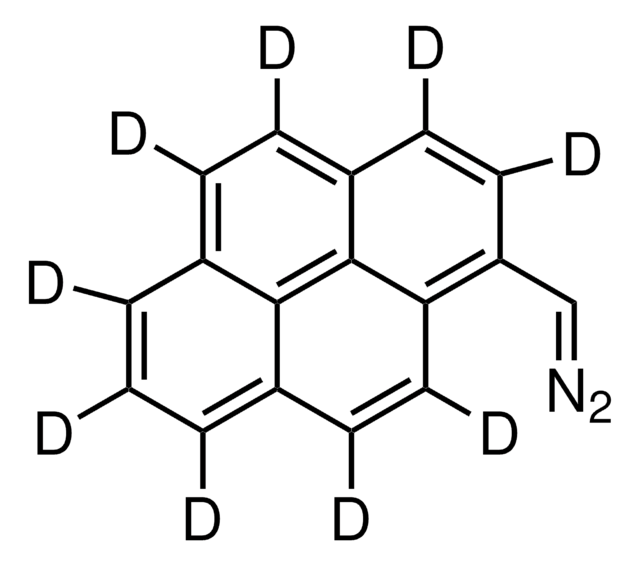

![Benzo[k]fluoranthene for fluorescence, ≥99%](/deepweb/assets/sigmaaldrich/product/structures/277/320/3e615f9f-3887-40f6-b176-bc1eb9b4832c/640/3e615f9f-3887-40f6-b176-bc1eb9b4832c.png)
